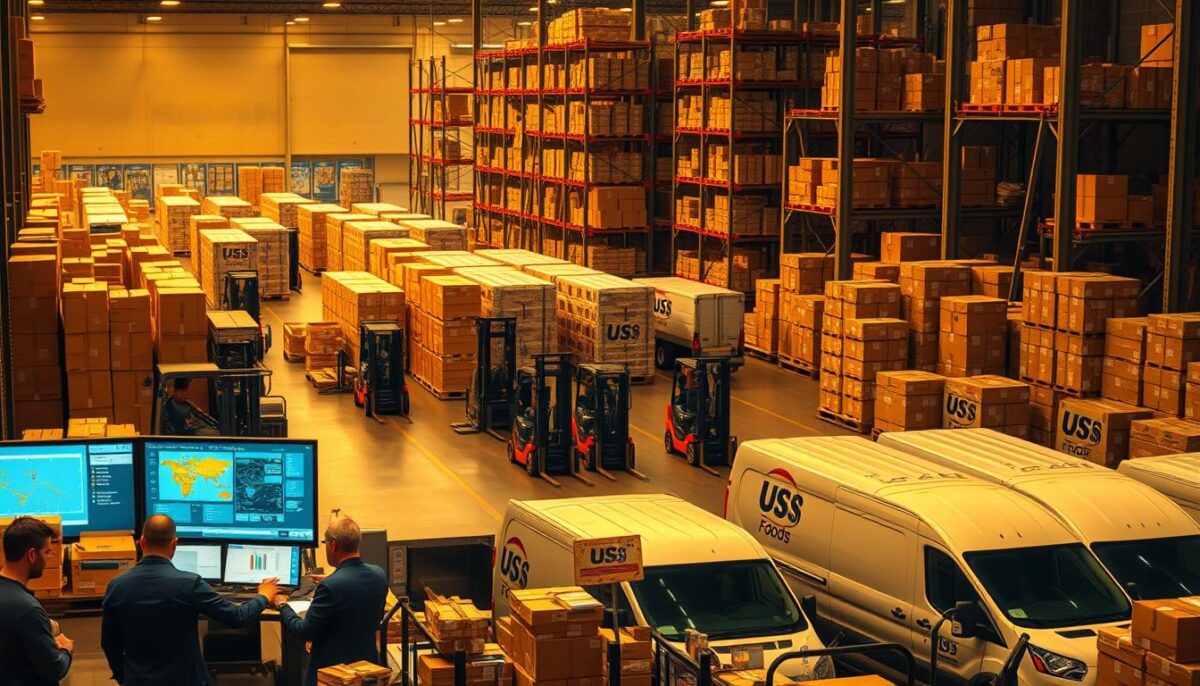
Gordon Food Service vs Sysco: Who Really Wins on Quality and Price?
October 20, 2025
4 Common Issues Restaurants Report About Gordon Food Service
October 21, 2025As a business owner in the foodservice industry, I’ve seen firsthand how partnering with a leading distributor like US Foods can be a game-changer for growth and profitability. However, I’ve also witnessed how hidden costs can creep in and erode those gains. Did you know that inefficient management of deliveries and inventory can lead to significant unnecessary expenses? In fact, a recent study revealed that poor supply chain management can increase operational costs by as much as 15%.
As we explore the hidden cost traps associated with US Foods, you’ll gain insights into how to optimize your partnership for maximum efficiency and cost savings. By understanding these potential pitfalls, you can transform your relationship with US Foods into a strategic partnership that drives business growth and operational excellence.
Key Takeaways
- Identify hidden cost traps in your US Foods partnership
- Optimize delivery and inventory management for cost savings
- Improve profitability through strategic partnership management
- Enhance operational efficiency with technology integration
- Maximize growth through effective supply chain management
Understanding the Hidden US Foods Cost Traps
The foodservice distribution landscape is complex, and I’ve seen firsthand how hidden costs can erode profitability. With US Foods continuing to expand nationwide, its operations have become increasingly intricate.
My Experience with Foodservice Distribution Challenges
Throughout my years working with foodservice distribution, I’ve witnessed how hidden costs can impact businesses. My experience includes helping restaurants and food businesses identify inefficiencies in their order management and inventory systems.
Why These Cost Traps Often Go Unnoticed
These cost traps frequently go unnoticed because they’re embedded in everyday operations. The data shows that businesses can lose significant revenue through hidden costs, with some experiencing up to 15% in unnecessary expenses related to distribution management.
- Hidden costs manifest as inefficiencies, errors, and wasted time.
- Businesses often focus solely on product pricing, overlooking operational inefficiencies.
The First Three US Foods Cost Traps to Watch For
As a customer of US Foods, understanding the potential cost traps in your distribution process is vital for maintaining profitability. In my experience, several key areas can lead to unforeseen expenses if not managed properly.
Trap #1: Paper-Based Order Management Inefficiencies
Paper-based order management systems are a significant source of inefficiency. They lead to increased error rates, delayed processing times, and substantial labor costs as staff manually enter and verify information across multiple platforms. Embracing digital solutions can mitigate these issues.
How to Avoid: Embracing Digital Solutions
By transitioning to digital order management, businesses can significantly reduce errors and improve processing times. This not only enhances customer service but also streamlines operations, leading to cost savings.
Trap #2: Overages, Shortages, and Damages (OS&D) Issues
OS&D issues directly impact your net profit and create friction in the customer-distributor relationship. Without proper tracking systems, businesses often absorb costs for products they never received or accept damaged goods without proper documentation for credits.
How to Avoid: Implementing Barcode Scanning and Real-Time Tracking
Implementing barcode scanning and real-time tracking can revolutionize how businesses manage their US Foods deliveries. This provides immediate visibility and accountability, reducing OS&D issues.

Trap #3: Complex Manual Invoicing Processes
Complex manual invoicing processes consume valuable time and frequently result in payment errors. Many businesses lose thousands of dollars annually through invoice discrepancies that go unnoticed or unresolved due to poor documentation.
How to Avoid: Streamlining with Electronic Proof of Delivery
Electronic proof of delivery (POD) systems create a verifiable record of exactly what was delivered, when, and in what condition. This eliminates disputes and streamlines the reconciliation process, improving cash flow management.
| Cost Trap | Solution | Benefit |
|---|---|---|
| Paper-Based Order Management | Digital Order Management | Reduced Errors, Improved Efficiency |
| OS&D Issues | Barcode Scanning & Real-Time Tracking | Improved Visibility, Reduced Losses |
| Complex Manual Invoicing | Electronic Proof of Delivery | Streamlined Reconciliation, Improved Cash Flow |
Three More Critical Cost Traps and Their Solutions
As we continue to explore the hidden cost traps associated with partnering with US Foods, it’s essential to understand the additional challenges that can impact your business.
Trap #4: Customer Disputes and Write-Offs
The fourth cost trap I’ve identified involves customer disputes and write-offs, which can significantly impact your relationship with US Foods and your overall profitability. Without proper documentation and real-time visibility into deliveries, businesses often find themselves unable to verify claims, resulting in costly write-offs and strained vendor relationships.
I’ve seen businesses reduce dispute-related costs by over 60% by implementing comprehensive documentation systems that create indisputable records of all transactions.
How to Avoid: Leveraging Real-Time Visibility and Documentation
With electronic proof of delivery (POD) and real-time visibility of delivery status and chain of custody documentation, U.S. Foods has minimized customer disputes and write-offs to deliver an enhanced level of customer service.
Trap #5: Inventory Management Challenges
The fifth trap centers on inventory management challenges, which lead to overstocking, stockouts, and cash flow problems that directly affect your kitchen operations and customer satisfaction. Traditional inventory management approaches fail to account for the complex variables in foodservice, including seasonality, special events, and changing customer preferences.

How to Avoid: AI-Driven Forecasting and Replenishment
AI-driven forecasting and replenishment systems, like those implemented by US Foods CHEF’STORE, can dramatically improve inventory accuracy while reducing carrying costs.
Trap #6: Supply Chain Inefficiencies
The sixth and perhaps most pervasive trap involves supply chain inefficiencies that create cascading problems throughout your operation, from ordering to final sales. Many businesses I’ve consulted with were unaware of how their disconnected planning processes were creating unnecessary costs and operational friction.
How to Avoid: Unified Planning Processes
Unified planning processes connect all aspects of your supply chain, from forecasting to delivery routing, creating a seamless flow that eliminates redundancies and gaps.
By understanding and addressing these three additional cost traps, businesses can further optimize their partnership with US Foods, leading to improved profitability and customer satisfaction.
Conclusion: Maximizing Your Partnership with US Foods
As we conclude our exploration of the hidden cost traps associated with US Foods, it’s clear that a strategic approach is necessary to optimize your partnership. By addressing the six critical cost traps outlined in this guide, you can achieve significant efficiency gains and cost reductions.
Implementing digital solutions for order management and real-time tracking can enhance accuracy and transparency, benefiting both your business and US Foods. The most successful businesses take a proactive approach to managing their foodservice distribution relationships, regularly reviewing processes and implementing improvements.
By doing so, you can transform your US Foods partnership into a competitive advantage, driving growth and innovation in your business. I encourage you to assess your current partnership against these six traps and prioritize addressing the areas that represent the greatest opportunity for improvement.
FAQ
What are the common issues with foodservice distribution?
As a customer, I’ve experienced that paper-based order management inefficiencies, overages, shortages, and damages (OS&D) issues, and complex manual invoicing processes can be major problems.
How can I avoid hidden costs when partnering with a food distributor?
To maximize your partnership, I recommend being aware of potential cost traps such as customer disputes and write-offs, inventory management challenges, and supply chain inefficiencies, and implementing solutions like ecommerce and technology to streamline your operations.
What are the benefits of using technology in foodservice distribution?
By leveraging technology, you can improve order accuracy, reduce delivery times, and enhance customer service, ultimately leading to increased profitability and growth for your business.
How can I optimize my inventory management?
Effective inventory management involves implementing a robust inventory management system, monitoring product levels, and adjusting your orders accordingly to minimize waste and maximize sales.
What role does customer service play in foodservice distribution?
Providing excellent customer service is crucial, as it helps build trust and loyalty with your customers, leading to increased customer retention and ultimately driving business growth.
How can I reduce costs associated with customer disputes and write-offs?
To minimize these costs, I suggest implementing a data-driven approach to track and analyze customer disputes, identifying root causes, and addressing them proactively to reduce write-offs and improve overall profitability.



